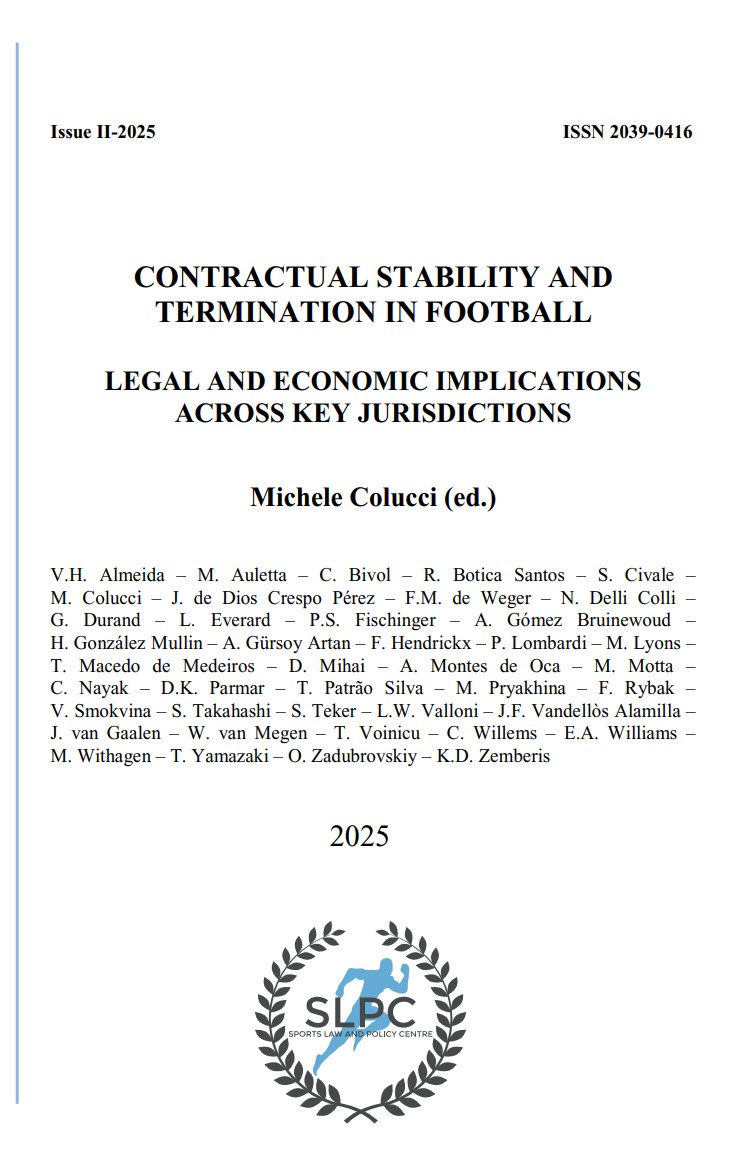CONTRACTUAL STABILITY AND TERMINATION IN FOOTBALL LEGAL AND ECONOMIC IMPLICATIONS ACROSS KEY JURISDICTIONS

We are proud to announce that Dr Lucien Valloni, Managing Partner and Noemi Delli Colli, of our Law Firm, have contributed the Chapter on Switzerland in this new Publication by the Sports Law and Policy Centre, of Salerno, in Italy.
The Publication covers player contracts and their termination under the laws in more than twenty countries and is edited by Prof Dr Michele Colucci, who is the Co-Founder and Honorary President of the Italian Association of Sports Lawyers.
The Synopsis of the Swiss Chapter is as follows:
- Introduction – 2. The Legal Framework – 3. The Individual Employment
Agreement – 4. Rights and Obligations of the Parties – 4.1 Main Obligations of Player
– 4.2 Main Obligations of Club – 4.3 Main Rights of Player (Employee) – 4.4 Main Rights
of Club – 5. Termination of Contracts – 6. Termination of Contracts Without Just Cause
– 6.1 Consequences for Clubs – 6.1.1 Under the Relevant Provisions of the Swiss Code
of Obligations – 6.1.2 Under the FIFA Provisions – 6.2 Consequences for Players
– 6.2.1 Under the Relevant Provisions of the Swiss Code of Obligations – 6.2.2 Under
the SFV Regulations and FIFA Provisions – 7. Disciplinary Measures and Sanctions
– 8. Buy-Out Clauses – Liquidated Damages Clauses, Penalty Clause – 9. Women Players
– 10. Coaches – Conclusion
In the Conclusion to their Chapter, they write as follows:
“Contractual stability and termination in Swiss football represent a delicate balance
between protecting the rights of players and safeguarding the interests of clubs.
Termination is a realistic possibility under certain conditions, and
Swiss law provides a structured approach to managing these situations.
However, as a result of the manner in which the CAS in various cases
but especially in the Matuzalem case determines the positive interest, the player
has to compensate more than the damages which the former club actually suffered.
In doing so the CAS infringes the principles of Swiss law. This approach can no
longer be upheld, especially also after the Diarra case.
Transfer fees in connection with the new contract are by no means to be
considered for the calculation of damages. The calculation of the compensation is
to be based on the difference between the terminated and the new player’s contract
as well as under consideration of a compensation for acquisition costs of the former
club which have not been fully amortized due to the early termination of the
contract. This seems to be the one and only adequate solution to achieve the
balance between the contractual stability and the freedom of movement of players,
which is actually the purpose of the FIFA regulations.”
The Publication is available in two versions: a Paper Book version and an E-Book version.
Further information is available by logging onto: www.sportslawandpolicycentre.com.